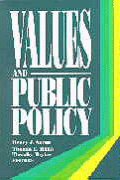Studies in this week’s Hutchins Roundup find that one fifth of the recent decrease in immigrant fertility rates is attributable to stricter immigration policies, temporary layoffs account for much of the COVID recession’s increase in unemployment, and more.
Want to receive the Hutchins Roundup as an email? Sign up here to get it in your inbox every Thursday.
Stricter immigration enforcement lowers fertility rates among undocumented immigrants
Between 2009 and 2013, nearly 20% of undocumented immigrants in the United States were deported in an expansion of immigration enforcement. At the same time, the fertility rate for Hispanic women who were likely undocumented dropped 26%. With data from the 2005 to 2014 American Community Survey, Catalina Amuedo-Dorantes of the University of California, Merced, and Esther Arenas-Arroyo of Vienna University use the temporal and geographic variation in enforcement to provide evidence that stricter immigration policy, particularly police-based measures and efforts to increase fear of apprehension, can account for about one fifth of the drop in fertility. Undocumented women may have experienced or anticipated separation from a partner or children, as well as a lack of geographic and financial stability, causing them to delay having children. In addition to the ethical implications of family separation and instability, the authors argue, this finding suggests that police-based immigration enforcement may have implications for U.S. population growth and the viability of the welfare state.
April unemployment spike primarily due to temporary layoffs
The official unemployment tally includes the “jobless-unemployed,” who are not working but seeking work, and the “recall-unemployed,” who are not working but expect to be called back to their jobs, sometimes called workers on temporary layoff. Using the Current Population Survey, Robert E. Hall of Stanford and Marianna Kudlyak of the Federal Reserve Bank of San Francisco, find that the jobless-unemployment rate decreased between March and April 2020, while the recall-unemployment skyrocketed. The overall unemployment rate increased by 9.9 percentage points, but the recall-unemployment rate increased by 10.1 percentage points. The authors also find that a substantial portion of those who expected to be recalled returned to employment in May and June. Moreover, the rate at which individuals are moving from recall-unemployment to jobless-unemployment is not rising much. During the Great Recession, the probability of a recall-unemployed worker becoming a jobless-unemployed worker rose to nearly 15%; in July 2020, it was just above 5%. Given that the job-finding rate for jobless-unemployed workers has returned to pre-pandemic levels, the authors argue that altogether the job market is “reasonably favorable” but could still deteriorate to “normal recession conditions.”
Reductions in state higher education expenditures hurt community college students more
State support for public institutions of higher education has been declining since the 1990s. Using consumer credit records matched with post-secondary educational records, Rajashri Chakrabarti at the Federal Reserve Bank of New York, Nicol Gorton at UCLA and Michael F. Lovenheim at Cornell find that these declines in state appropriations resulted in worse graduation and post-graduation outcomes for students. Specifically, a fall in state support reduces the likelihood of obtaining a bachelor’s degree by age 25, increases the likelihood of taking out a student loan, and increases the total loan amount. By age 35, students at two-year colleges have lower credit scores and are more likely to live in zip codes with lower average incomes than peers who went to college during periods of more state support. No similar post-graduate effects are found on students at four-year schools. Reductions in state funding are more likely to lead to increases in tuition, net of financial aid, at four-year institutions than at two-year institutions. The authors posit that four-year institutions are better able to weather changes in resources without sacrificing education quality by adjusting tuition, while two-year institutions with lower income populations instead reduce the resources available to students.
Chart of the week: Federal debt is rising faster than debt in other sectors
Quote of the week:
“The expansion is still far from complete. At this early stage, I would argue that the risks of policy intervention are still asymmetric. Too little support would lead to a weak recovery, creating unnecessary hardship for households and businesses. Over time, household insolvencies and business bankruptcies would rise, harming the productive capacity of the economy, and holding back wage growth. By contrast, the risks of overdoing it seem, for now, to be smaller. Even if policy actions ultimately prove to be greater than needed, they will not go to waste. The recovery will be stronger and move faster if monetary policy and fiscal policy continue to work side by side to provide support to the economy until it is clearly out of the woods,” says Jerome Powell, Chair of the Federal Reserve Board of Governors.
The Brookings Institution is committed to quality, independence, and impact.
We are supported by a diverse array of funders. In line with our values and policies, each Brookings publication represents the sole views of its author(s).











Commentary
Hutchins Roundup: Immigrant fertility, temporary layoffs, and more
October 8, 2020